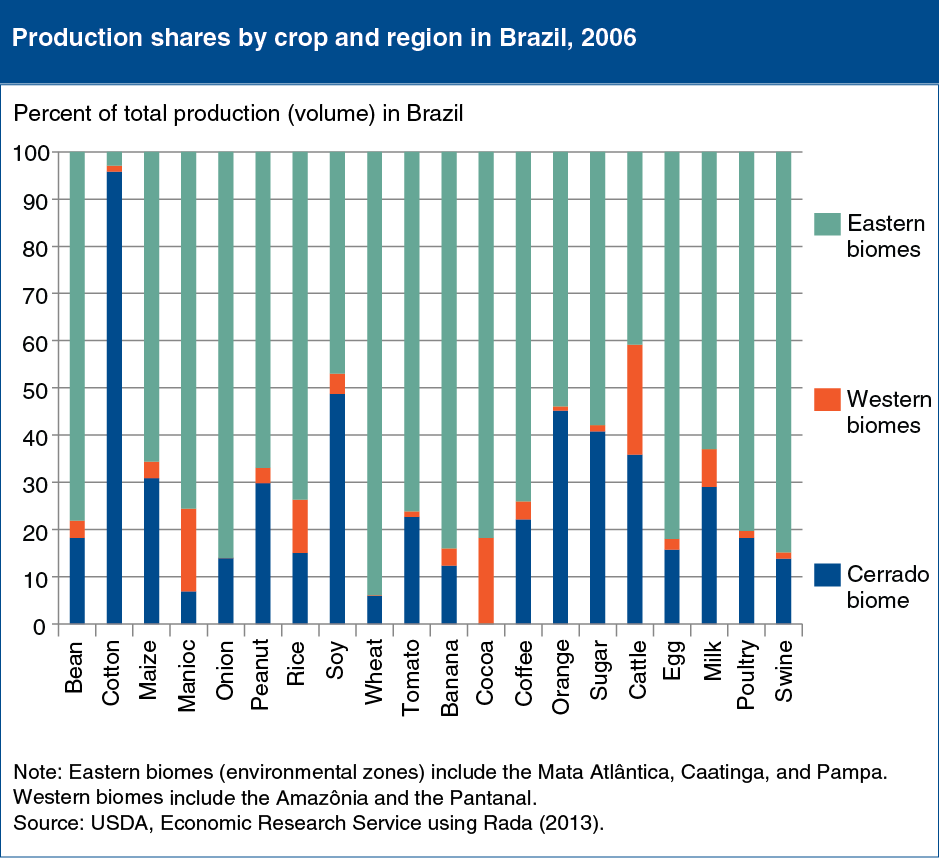Cerrado region remains key to growth in Brazil's farm output
- by Economic Research Service
- 9/16/2013

The successful agricultural transformation of Brazil’s Cerrado, a broad savannah that accounts for 24 percent of the country’s total area, has driven past growth in farm output in Brazil and is likely to remain important to future growth. The average output of Cerrado farms increased 192 percent in volume terms between 1985 and 2006. By 2006, Brazil was the second-largest global producer of soybeans after the United States, with 49 percent of that production coming from the Cerrado. The Cerrado’s tropical soils, with good physical structure but low fertility, high acidity, and susceptibility to degradation, are generally deficient in important nutrients, but improved varieties and management practices developed by Brazilian research institutions were central to making crops and pastures more productive. ERS research examining productivity across Brazilian environmental zones—or biomes—indicates that average farms in the Cerrado achieved a total factor productivity (TFP—a measure of total output to total input) growth rate of less than 1 percent per year between 1985 and 2006, far less than the 4.3 percent achieved by the biome’s most-efficient farms. This productivity gap suggests considerable room for continued output growth for most farms in the region. This chart can be found in “Evaluating the Resource Cost and Transferability of Brazil’s Cerrado Agricultural ‘Miracle’” in ERS’s September 2013 Amber Waves magazine.

